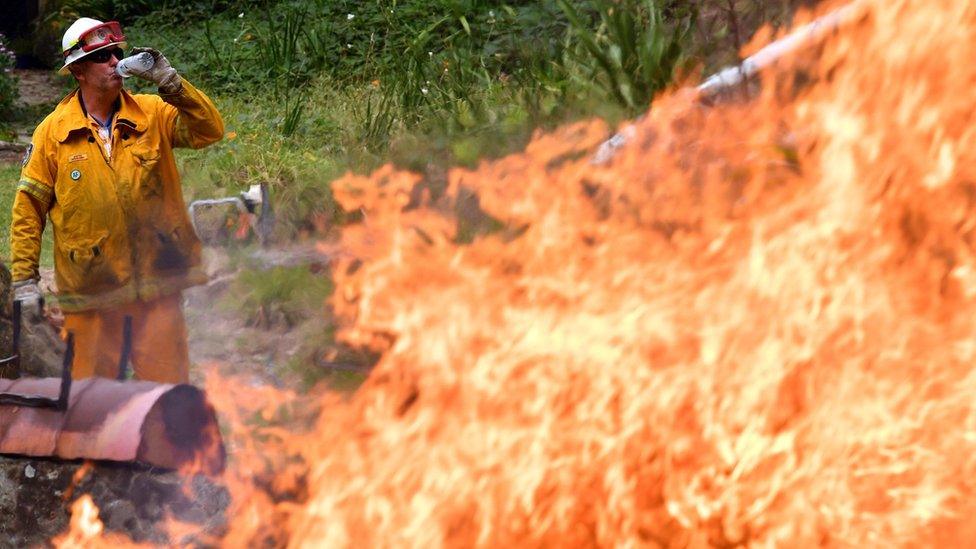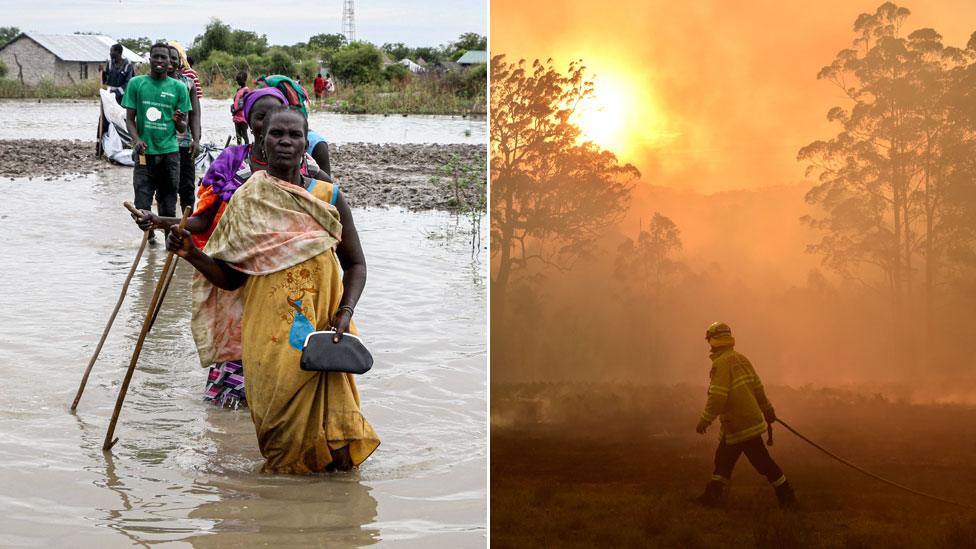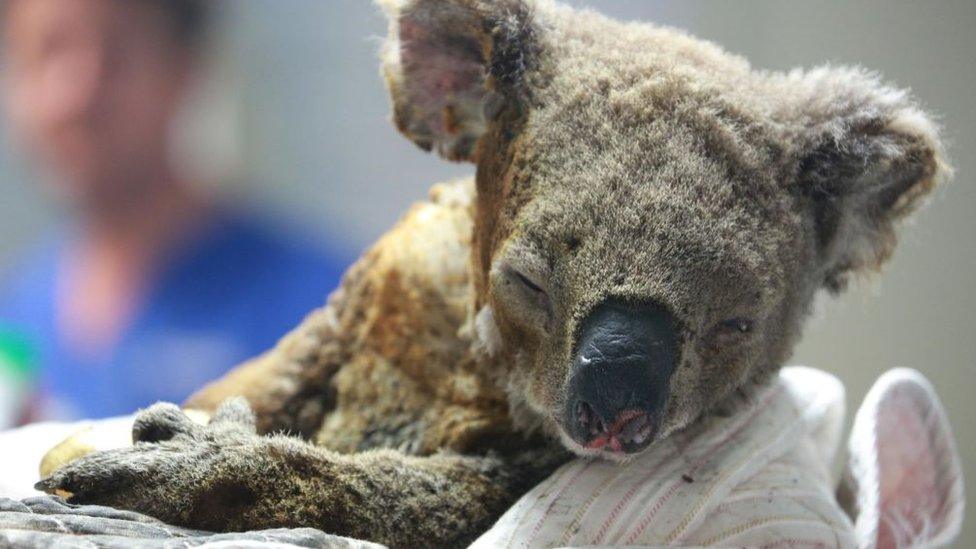Australia bushfires: Sydney gets toughest water restrictions in a decade
- Published

Residents face a fine of A$220 if they are caught breaking the strict water restrictions
Sydney residents are facing the city's toughest water restrictions in more than a decade amid a severe drought and deadly bushfires in eastern Australia.
On Tuesday, level two restrictions were enacted in the capital of New South Wales (NSW), a state 99.9% in drought.
These could be increased to level three within months, local media report.
Temperatures are predicted to soar above 40C (104F) from Tuesday, worsening fires which have already killed six people since October.
There are now more than 100 fires in NSW and Queensland states, many of which have been burning for several weeks.
What are the water restrictions?
Under the new rules, people in Greater Sydney, Blue Mountains and Illawarra are not allowed to water their gardens between 10:00 and 16:00.
When they do water their gardens, they can only do so with a bucket or a watering can - hoses and sprinklers are banned.
Cars can only be washed with a bucket or at a commercial car wash, and swimming pools of any size cannot be filled unless the owner acquires a special permit.

Wildfires across Australia have killed six people and destroyed more than 700 homes since October
The rules apply to everyone in these areas, and residents caught breaking the restrictions face fines of A$220 (£114, $150). Businesses will be fined A$550.
Under level three restrictions, people will only be able to water their gardens before 09:00 and after 18:00, and will be banned from taking showers longer than five minutes.
Officials plan to implement level three rules when Sydney's dam levels hit 30% - a critical low. This was originally predicted to happen in July, but could now be much earlier due to the worsening bushfires and drought.
Several rural towns have already run out of tap water and are relying on bottled supplies and trucked-in cartons. A number of inland centres have endured water restrictions for months.
How intense is this drought?
The crippling drought affecting eastern Australia is one of the worst on record, officials say.
Almost all of NSW - Australia's most populous state - has been officially drought-affected since 2017. Some regions have suffered little or no significant rainfall for even longer than that.

The drought is devastating farming communities
Farmers and residents in inland areas have felt its impacts most acutely - NSW typically produces a quarter of Australia's agricultural output.
What is the latest with the fires?
The tinder-dry environment has created nightmarish conditions for sparking and sustaining bushfires.
With rising temperatures and increased wind speeds expected to exacerbate the blazes on Tuesday, firefighters have been carrying out the controlled burning of grassland around homes to remove fuel, officials said.
NSW Rural Fire Service Commissioner Shane Fitzsimmons said firefighters had been trying to establish fire containment lines in previous days.
"It is an enormous amount of work, with more than 2,000 people out in the field," he told reporters.
Last week, several smaller fires in a national park north of Sydney combined to form a "mega blaze", which now stretches more than 60km (37.2 miles). It has grown to more than 320,000 hectares in size.
'Sydney's mega fire is getting out of control'
The fires have blanketed Sydney in smoke for weeks and sent ash falling, causing a surge in respiratory issues.
The city's air quality again deteriorated beyond "hazardous" levels on Tuesday.
Since October, bushfires across Australia have killed six people and destroyed more than 700 homes.
The severity of the blazes so early in the country's fire season has caused alarm, and has prompted calls for greater action to tackle climate change.
Is this fire season particularly bad?
It hasn't come close to the fatalities of 2009, when nearly 200 people died, but the scale of the damage has been huge.
About two million hectares of land have burned in NSW alone, but the fires have affected every state.
Firefighters flee intense flames in Sydney, in a video shared by them to show the dangers of bushfires
Mr Fitzsimmons, NSW RFS Commissioner, said: "There is an absolute lack of moisture in the soil, a lack of moisture in the vegetation... you are seeing fires started very easily and they are spreading extremely quickly, and they are burning ridiculously intensely."
Is climate change to blame?
Australia's Bureau of Meteorology says that climate change has led to an increase in extreme heat events and raised the severity of other natural disasters, such as drought.
Following the driest season on record in NSW, the bureau predicts that Australia's summer - which has just begun - will be severe.


The government has been criticised over its efforts to address climate change. PM Scott Morrison has dismissed accusations linking the crisis to his government's policies.
Hundreds of bushfire survivors and farmers converged on the nation's capital, Canberra, last week in protest.
One woman displayed the charred remains of her home outside Parliament - on which she had written: "Morrison, your climate crisis destroyed my home."
- Published28 November 2019

- Published7 December 2019

- Published22 November 2019
